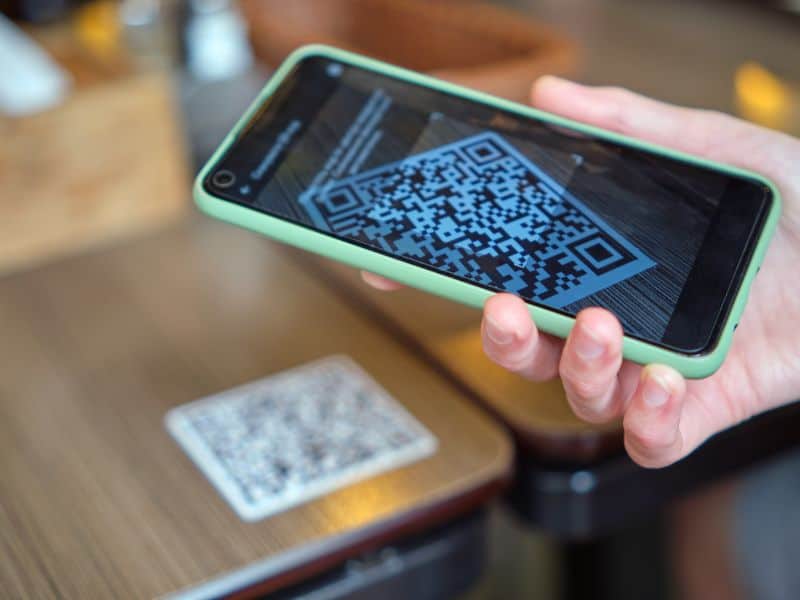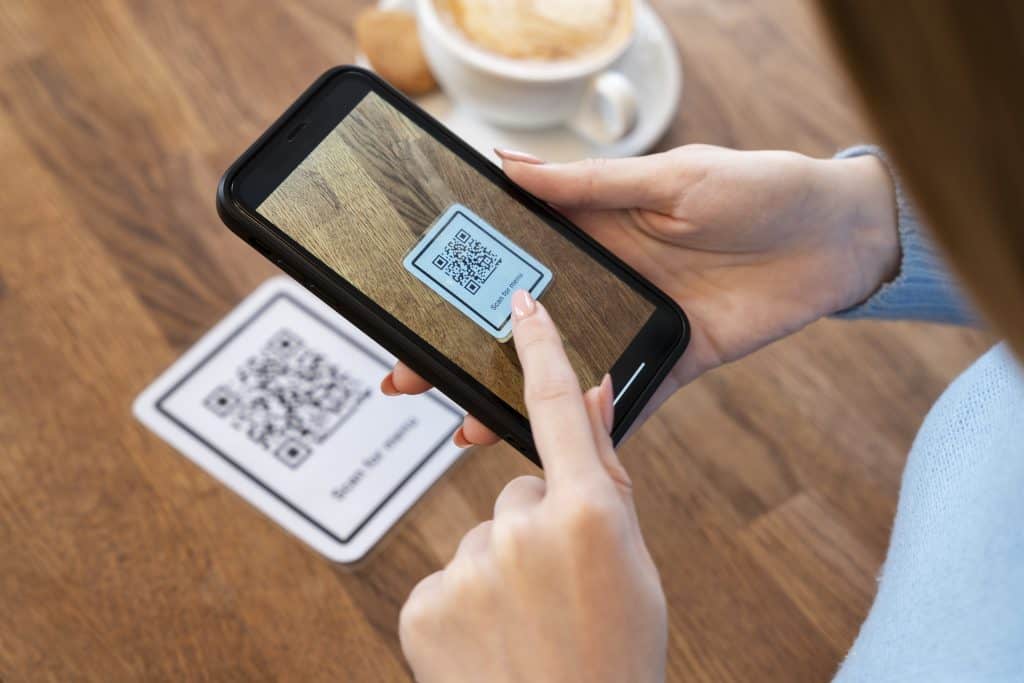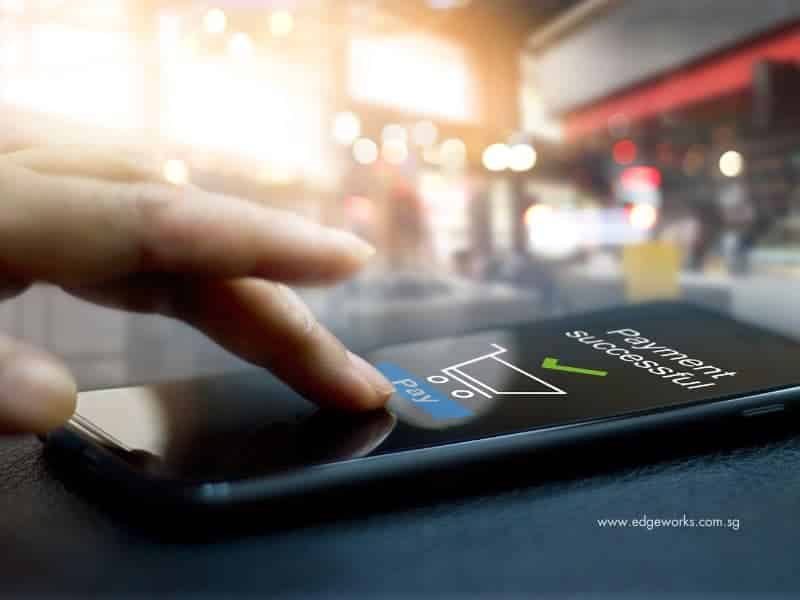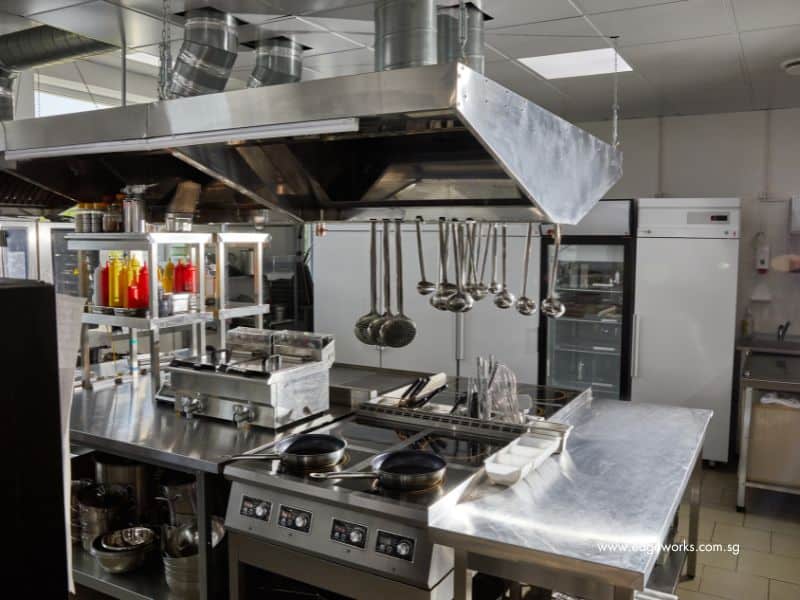
QR Ordering, or Quick Response Ordering, have become increasingly popular in recent years, and their use in the restaurant industry is no exception. Originally developed in Japan in the 1990s, QR codes were initially used for tracking inventory in the automotive industry. However, their versatility and ease of use quickly led to their adoption in various other sectors, including restaurants.
QR ordering is a system that allows customers to view menus, place orders, and make payments using their smartphones. Instead of relying on traditional paper menus and waitstaff, customers simply scan a QR code displayed at their table to access the restaurant’s digital menu. From there, they can browse through the available options, customize their order, and submit it directly to the kitchen. Payment can also be made through the QR code system, eliminating the need for physical cash or credit cards.
Key Takeaways
- QR ordering is a contactless ordering system that allows customers to order and pay using their smartphones.
- QR ordering can increase sales and customer satisfaction by reducing wait times and improving order accuracy.
- To implement QR ordering, restaurants need to choose the right system, create a user-friendly menu, promote it to customers, and train staff.
- QR ordering data can be analyzed to improve restaurant performance and identify trends.
- Best practices for QR ordering include offering incentives, providing clear instructions, and regularly updating the menu.
The Benefits of QR Ordering for Restaurants and Customers
One of the key benefits of QR ordering for restaurants is the increased efficiency and speed of service it provides. With traditional ordering methods, customers often have to wait for a server to take their order, which can be time-consuming, especially during peak hours. However, with QR ordering, customers can simply scan the code on their table and browse the menu at their own pace. This not only saves time for both customers and staff but also allows restaurants to serve more customers in a shorter amount of time.
Another advantage of QR ordering is the improved accuracy of orders. When customers place their orders directly through a digital menu, there is less room for miscommunication or errors compared to verbal orders. This reduces the chances of incorrect orders being served and ensures that customers receive exactly what they want. As a result, customer satisfaction increases, leading to repeat business and positive word-of-mouth recommendations.
Furthermore, QR ordering enhances the overall customer experience. By providing a seamless and convenient way for customers to browse menus and place orders, restaurants can create a more enjoyable dining experience. Customers no longer have to wait for a server to take their order or worry about flagging down staff for additional requests. They have full control over their dining experience, which can lead to higher customer satisfaction and loyalty.
Additionally, QR ordering has been shown to increase revenue and sales for restaurants. With digital menus, restaurants can easily highlight daily specials, recommend add-ons or upgrades, and showcase high-margin items. This strategic placement of menu items can lead to increased sales and upselling opportunities. Moreover, QR ordering allows restaurants to collect valuable data on customer preferences and behavior, enabling them to personalize offers and promotions, further driving sales.
| Benefits of QR Ordering for Restaurants | Increased Revenue | Improved Operations |
|---|---|---|
| 1. Faster Table Turnover | ✓ | ✓ |
| 2. Reduced Labor Costs | ✓ | ✓ |
| 3. Increased Order Accuracy | ✓ | ✓ |
| 4. Improved Customer Satisfaction | ✓ | ✓ |
| 5. Enhanced Menu Visibility | ✓ | ✓ |
| 6. Better Data Collection | ✓ | ✓ |
How to Implement
Implementing QR ordering in your restaurant requires careful planning and execution. Here are the steps you need to follow to successfully implement QR ordering:
1. Assessing your restaurant’s needs and goals: Before choosing a QR ordering system, it’s important to assess your restaurant’s specific needs and goals. Consider factors such as the size of your establishment, the volume of orders you receive, and the level of customization you require.
2. Choosing the right QR ordering system: There are several QR ordering systems available in the market, each with its own features and capabilities. Research different options, read reviews, and compare prices to find the system that best suits your restaurant’s needs.
3. Setting up the system in your restaurant: Once you have chosen a QR ordering system, you need to set it up in your restaurant. This involves creating digital menus, uploading images and descriptions of menu items, and configuring the system to integrate with your existing POS (Point of Sale) system.
4. Testing and troubleshooting: Before launching QR ordering for your customers, it’s crucial to thoroughly test the system to ensure everything is working smoothly. Conduct test orders, check for any technical glitches, and address any issues that arise. It’s also important to train your staff on how to use the system effectively.
Choosing the Right QR Ordering System
| QR Ordering System | Features | Benefits |
|---|---|---|
| Customizable Menu | Allows restaurant owners to easily update menu items and prices | Ensures customers have access to the most up-to-date menu options |
| Order Tracking | Enables customers to track the status of their order in real-time | Improves customer satisfaction and reduces wait times |
| Payment Integration | Allows customers to pay for their order directly through the QR ordering system | Reduces the need for physical payment methods and improves transaction security |
| Analytics | Provides restaurant owners with valuable data on customer behavior and order trends | Enables owners to make data-driven decisions to improve their business |
| Customer Feedback | Enables customers to provide feedback on their experience with the QR ordering system | Helps restaurant owners identify areas for improvement and enhance customer satisfaction |
When it comes to choosing a QR ordering system for your restaurant, there are several factors to consider. Firstly, you need to assess the specific needs and requirements of your establishment. Consider the size of your restaurant, the volume of orders you typically receive, and the level of customization you require. Some QR ordering systems are better suited for small, independent restaurants, while others are designed for larger establishments with high order volumes.
Secondly, it’s important to research and compare different QR ordering systems in the market. Look for systems that have positive reviews and a track record of reliability. Consider factors such as ease of use, integration with your existing POS system, and customer support provided by the system provider.
Creating a User-Friendly Menu
A user-friendly QR ordering menu is essential to ensure a smooth and enjoyable customer experience. Here are some tips for creating a user-friendly menu:
1. Designing a visually appealing menu: The design of your digital menu plays a crucial role in attracting customers and enticing them to place orders. Use high-quality images of your menu items to make them look appetizing. Choose fonts and colors that are easy to read and visually appealing. Consider incorporating your restaurant’s branding elements to create a cohesive look.
2. Organizing the menu for easy navigation: A well-organized menu makes it easier for customers to find what they’re looking for. Categorize your menu items into logical sections such as appetizers, main courses, desserts, etc. Use clear headings and subheadings to guide customers through the menu. Consider adding search functionality to allow customers to quickly find specific items.
3. Providing detailed descriptions and images of menu items: To help customers make informed decisions, provide detailed descriptions of each menu item. Include information about ingredients, cooking methods, and any special dietary considerations. Additionally, include high-quality images of each item to give customers a visual representation of what they can expect.
By following these tips, you can create a user-friendly QR ordering menu that enhances the overall customer experience and encourages customers to explore your offerings.
Promoting QR Ordering to Your Customers

Once you have implemented QR ordering in your restaurant, it’s important to promote it to your customers. Here are some effective ways to promote QR ordering:
1. Displaying QR codes prominently in your restaurant: Place QR codes on tables, menus, and other visible areas in your restaurant. Make sure they are easily scannable and clearly labeled with instructions on how to use them.
2. Offering incentives for customers who use QR ordering: Encourage customers to try QR ordering by offering incentives such as discounts, freebies, or loyalty points for their first order through the system. This not only incentivizes customers to use QR ordering but also helps you gather valuable data on customer preferences and behavior.
3. Educating customers on how to use QR ordering: Some customers may be unfamiliar with QR codes or hesitant to try new technology. Train your staff to educate customers on how to use QR ordering and address any concerns or questions they may have. Provide clear instructions on your website, social media platforms, and in-store signage to guide customers through the process.
By actively promoting QR ordering to your customers, you can increase adoption rates and encourage more customers to embrace this convenient and contactless dining experience.
Training Your Staff
To ensure the successful implementation of QR ordering in your restaurant, it’s crucial to provide comprehensive training to your staff. Here are some key steps to train your staff on QR ordering:
1. Provide comprehensive training on how to use the QR ordering system. This includes familiarizing them with the interface, teaching them how to navigate the menu, and explaining the order and payment process.
2. Ensure that your staff is comfortable with the system by conducting hands-on training sessions. Allow them to practice using the system, placing test orders, and resolving any issues that may arise.
3. Encourage your staff to promote QR ordering to customers. Train them on how to educate customers on the benefits of QR ordering and address any concerns or questions they may have.
By investing time and effort in training your staff, you can ensure that they are equipped with the necessary skills and knowledge to provide excellent customer service and support the successful implementation of QR ordering in your restaurant.
Managing Orders and Payments
QR ordering streamlines the order and payment process, making it more efficient for both customers and staff. Here are some key considerations for managing orders and payments with QR ordering:
1. Streamlining the order process: With QR ordering, orders are sent directly from the customer’s device to the kitchen or bar, eliminating the need for manual order taking. This reduces the chances of miscommunication or errors in the order process. Ensure that your kitchen staff is trained on how to receive and process orders efficiently.
2. Ensuring the security of customer information: Customer data security is of utmost importance when implementing QR ordering. Choose a system that complies with industry standards and regulations for data protection. Implement measures such as encryption and secure payment gateways to safeguard customer information.
3. Resolving any issues that may arise during the ordering process: Despite the efficiency of QR ordering, technical issues or user errors may occur. Train your staff on how to troubleshoot common issues and provide prompt assistance to customers. Have a dedicated support system in place to address any technical glitches or system downtime.
By effectively managing orders and payments with QR ordering, you can provide a seamless and secure experience for your customers, further enhancing their satisfaction and loyalty.
Analyzing QR Ordering Data
One of the key advantages of QR ordering is the ability to collect valuable data on customer behavior and preferences. By analyzing this data, you can gain insights into your restaurant’s performance and make data-driven decisions to improve operations. Here are some ways to analyze QR ordering data:
1. Track customer behavior and preferences: Analyze data on popular menu items, order frequency, average order value, and customer feedback. Identify trends and patterns to understand what resonates with your customers and what areas need improvement.
2. Identify areas for improvement in your restaurant’s operations: Use QR ordering data to identify bottlenecks or inefficiencies in your restaurant’s operations. For example, if you notice a high number of abandoned orders at a certain time of day, it may indicate a need for additional staff or improved kitchen processes.
3. Make data-driven decisions to improve your restaurant’s performance: Use the insights gained from QR ordering data to make informed decisions about menu changes, pricing strategies, marketing campaigns, and operational improvements. For example, if you notice that certain menu items have low sales despite being prominently featured, you can consider adjusting the pricing or reevaluating their positioning on the menu.
By leveraging QR ordering data effectively, you can continuously improve your restaurant’s performance and stay ahead of the competition in the ever-evolving restaurant industry.
QR Ordering Best Practices for Restaurants
To ensure the success of QR ordering in your restaurant, it’s important to follow best practices. Here are some key best practices for QR ordering:
1. Keep the system up-to-date and secure: Regularly update your QR ordering system to ensure that it is running smoothly and is protected against security threats. Stay informed about the latest advancements in QR technology and implement any necessary updates or patches.
2. Provide excellent customer service: While QR ordering offers convenience, it’s important to maintain a high level of customer service. Train your staff to be attentive, responsive, and knowledgeable about the menu and ordering process. Encourage them to check in with customers and address any concerns or questions they may have.
3. Continuously improve the system based on customer feedback: Actively seek feedback from customers who use QR ordering and use their input to make improvements. Consider implementing features or functionalities suggested by customers to enhance their experience.
By following these best practices, you can ensure that QR ordering becomes a seamless and integral part of your restaurant’s operations, driving customer satisfaction and loyalty.
QR Ordering as a Key to Success in the Restaurant Industry
In conclusion, QR ordering has emerged as a key technology in the restaurant industry, offering numerous benefits for both restaurants and customers. Its ability to increase efficiency and speed of service, improve order accuracy, enhance the customer experience, and drive revenue and sales makes it an essential tool for restaurants looking to stay ahead of the competition.
By carefully implementing QR ordering in your restaurant, choosing the right system, creating a user-friendly menu, promoting it to customers, training your staff effectively, managing orders and payments efficiently, analyzing data to improve performance, and following best practices, you can harness the power of QR ordering to transform your restaurant’s operations and drive success in the ever-evolving restaurant industry.
Embrace QR ordering today and unlock a world of possibilities for your restaurant. Want to learn how QR ordering can transform your restaurant? Contact us for a free consultation.



